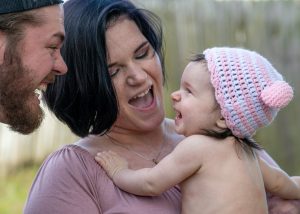
©unsplash.com
A Spanish study explored the loss of health-related quality of life (HRQoL) in children younger than two years after a respiratory syncytial virus (RSV) infection. Results showed an HRQoL loss of 38%, 32% and 9% during the first, second and third week after the diagnosis and a median cost of ~€600 per treated child. This type of socioeconomic evaluation could help prioritise the development of an RSV vaccine.
The Respiratory Syncytial Virus (RSV) is a major cause of acute lower respiratory infections in young children, especially under two years of age, but there is still no vaccine available for its prevention. For decision-makers, in order to prioritise a healthcare intervention such as a vaccine development, an economic evaluation of the benefits of the intervention is necessary. One type of evaluation is the cost-utility analysis (CUA), for which the disease’s impact on health-related quality of life (HRQoL) is estimated. HRQoL will then be analysed over time as Quality Adjusted Life Years (QALYs), allowing standardised comparisons between different interventions and their priority. In the case of RSV, related HRQoL and QALY loss for very young children has not been established yet.
Consequently, an observational prospective multicentre surveillance study was conducted in Spain in children younger than two years. The aim was to evaluate the benefits of a potential RSV vaccination programme. The study assessed the HRQoL loss and direct costs from an RSV episode in positive-tested children and their caregivers during a month of follow-up, using four online questionnaires, which were completed by the parents at four timepoints after diagnosis (day 0, 7, 14 and 30).
The questionnaires covered the child’s symptoms and behaviour, parents’ concerns, emotions, and the infection’s impact on family activities. For healthcare-cost estimation, families declared their healthcare resource consumption like visits to the paediatrician, emergency rooms, etc. Additionally, RSV-related pharmaceutical treatments were also taken into consideration.
Of the 117 children enrolled in the study, 86 (73.5%) were RSV positive. One identified risk factor for RSV was the smoking habit of caregivers. Smoking at home increased the children’s risk of RSV by three times. On the contrary, a previous history of bronchiolitis considerably lowered the chances of contracting RSV. The answers showed that 88% of parents were worried after the first week since diagnosis, but their concern about the child’s illness decreased over time. RSV was associated with a family’s HRQoL loss of 38%, 32% and 9% during the first, second and third week after the diagnosis.
Results about healthcare consumption made clear that paediatrician visits are the most needed service. Emergency visits at primary care facilities or hospitals were necessary around 60% of the time, and 35% of the 86 RSV-positive children were hospitalised. Regarding the pharmaceutical treatment used, paracetamol and salbutamol were used in more than 60% of the patients, followed by ibuprofen, oral steroid and antibiotics.
The total median cost per patient (including treatments) was estimated at €598.8. An extended version of the study’s questionnaires is expected for the future and will bring more accurate data for further analysis.
Paper available at: BMC Infectious Diseases
Full list of authors: Eva Díez‑Gandía, Carla Gómez‑Álvarez, Mónica López‑Lacort, Cintia Muñoz‑Quiles, Isabel Úbeda‑Sansano, Javier Díez‑Domingo and Alejandro Orrico‑Sánchez

